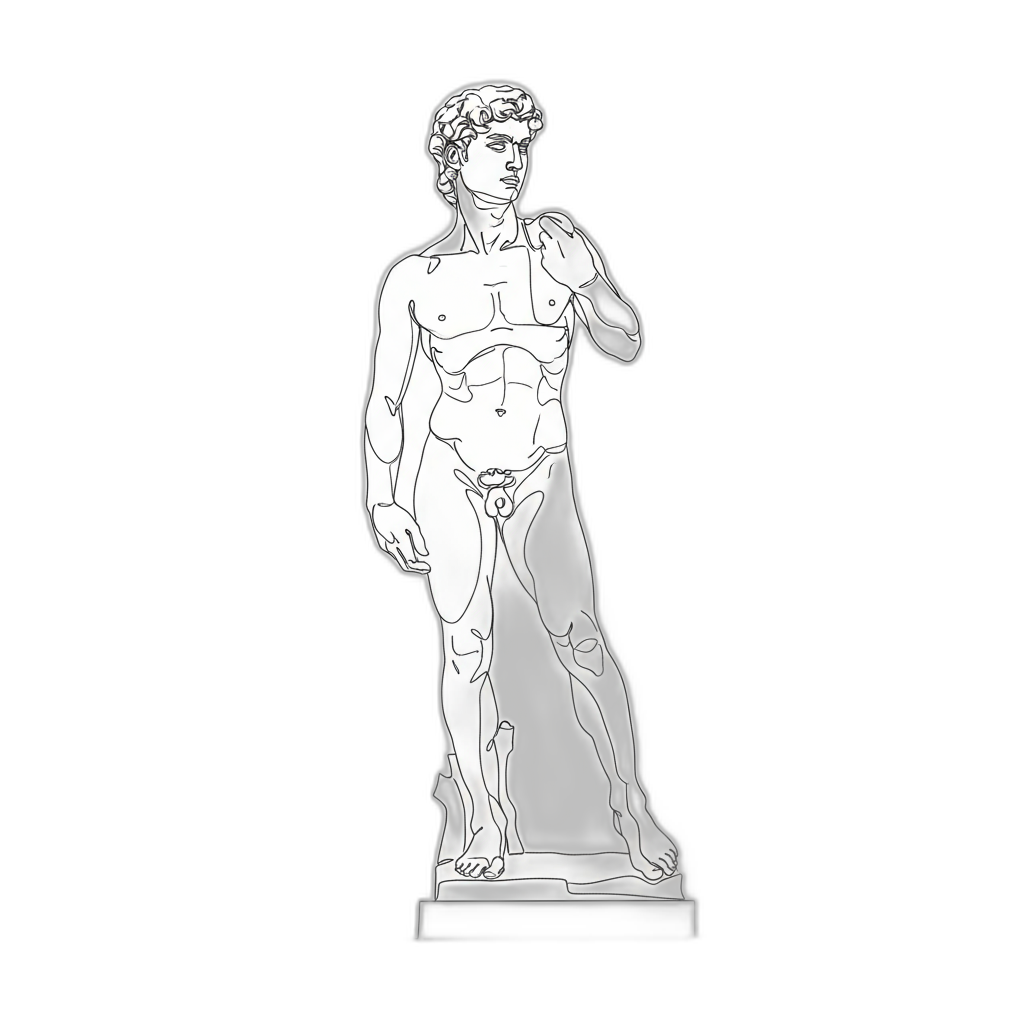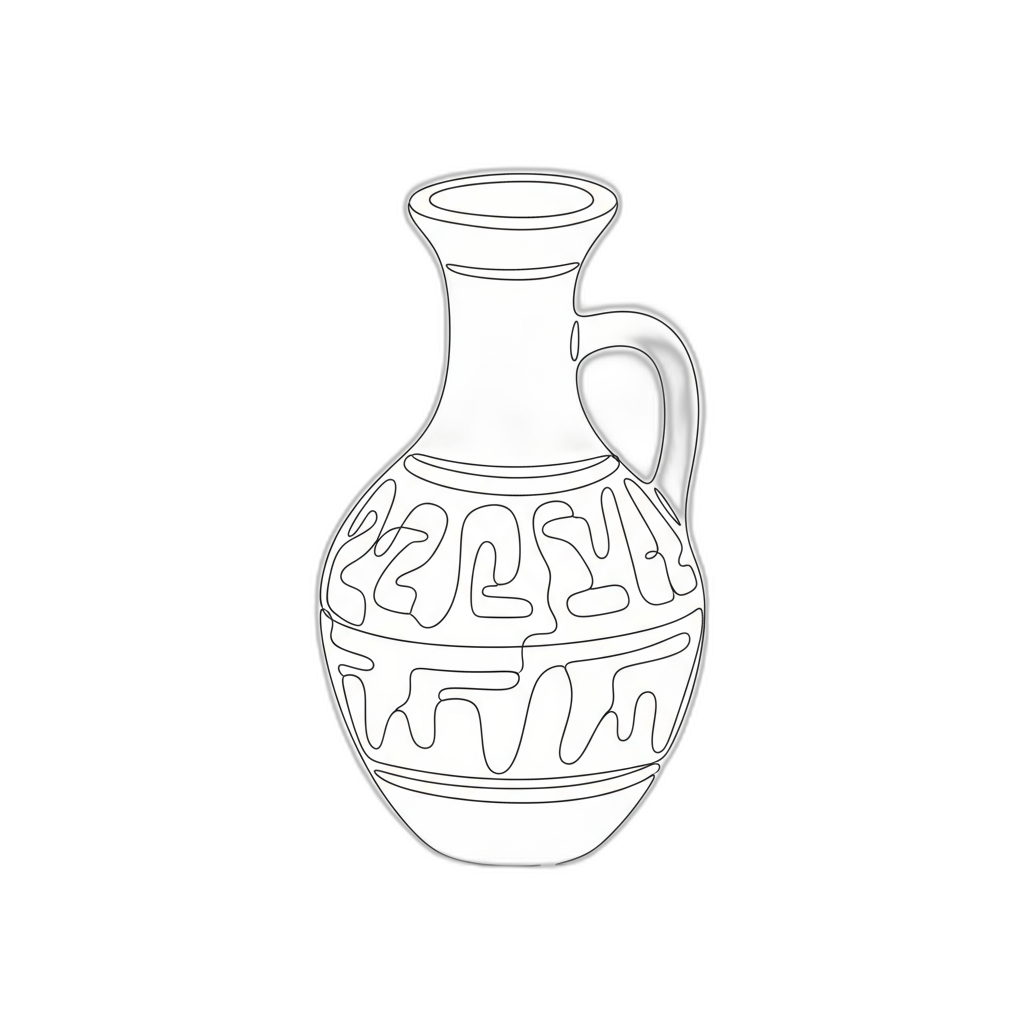IRS Form 706 serves as a critical financial document used to report the total value of a deceased individual's estate and determine potential estate tax liabilities. This comprehensive tax return provides a detailed accounting of an individual's assets and financial holdings at the time of their death, enabling the federal government to assess tax obligations.
The form captures a comprehensive range of assets, including both tangible and intangible property such as real estate, financial investments, business interests, cash holdings, and personal property. Its primary function is to calculate the gross estate value and identify any potential estate tax that may be owed based on the current federal exemption threshold.
Typically, the executor or personal representative of the deceased's estate is responsible for completing and filing Form 706. The filing becomes mandatory when the total estate value surpasses the current federal exemption limit, which can fluctuate annually based on current tax legislation.
The form itself is structured into multiple critical sections, each designed to provide a comprehensive financial overview. These include detailed reporting of gross estate value, allowable deductions such as outstanding debts and funeral expenses, precise tax computations, and documentation of any previous payments or available credits.
Importantly, Form 706 must be filed within nine months of the date of death, though extensions can be requested for filing purposes. While not every estate requires this filing, careful and accurate completion is essential to ensure proper tax compliance and avoid potential legal complications for estate beneficiaries.
When navigating the intricate landscape of estate taxes, accurately determining the value of a deceased person's assets is a fundamental requirement. IRS Form 706 mandates a comprehensive assessment of estate assets that exceed specific value thresholds. The appraisal process serves multiple critical purposes that extend beyond simple tax compliance.
Establishing a precise fair market value is paramount. The IRS requires an objective, professional evaluation of each asset at its value on the date of the decedent's death. This valuation becomes the cornerstone for calculating potential estate tax liabilities, ensuring transparency and accuracy in the reporting process.
Tax calculations demand meticulous attention to detail. Even slight variations in asset valuation can significantly impact the estate's tax burden. Undervaluing assets may trigger unexpected tax penalties, while overvaluation can unnecessarily strain the estate's financial resources. A comprehensive, professional appraisal minimizes these risks by providing a defensible and accurate assessment.
Legal protection is another crucial consideration. A professionally conducted appraisal creates a documented record that can preempt potential disputes among heirs, beneficiaries, or creditors. Should an IRS audit occur, this documentation serves as authoritative evidence, potentially shielding the estate from costly legal challenges.
Charitable contributions require equally rigorous valuation. When estates include philanthropic bequests, precise appraisals substantiate these donations for both IRS requirements and receiving organizations. This careful documentation can optimize tax considerations and ensure the donor's intentions are fully realized.
Asset distribution becomes more transparent with accurate valuations. An objective assessment provides a clear framework for equitable distribution among beneficiaries, reducing the potential for interpersonal conflicts during an already challenging time.
State-level regulations add another layer of complexity. Many states impose additional appraisal requirements that extend beyond federal mandates. Engaging professionals with comprehensive knowledge of both federal and state regulations ensures complete compliance across all jurisdictions.
Complex assets demand specialized expertise. Properties, businesses, unique collections, and other intricate holdings require nuanced evaluation. Qualified appraisers bring the necessary technical knowledge to accurately assess these specialized assets, providing a comprehensive and reliable valuation.
Ultimately, a professional appraisal for IRS Form 706 is more than a bureaucratic requirement. It represents a critical tool for responsible estate management, protecting the financial interests of both the estate and its beneficiaries while ensuring full compliance with regulatory standards.
An artwork appraisal represents a comprehensive professional evaluation that precisely determines the monetary and historical value of an art piece. This meticulous process involves expert assessment of multiple intricate factors that collectively influence an artwork's market worth and significance.
Professional art appraisers employ a sophisticated methodology that examines critical elements such as the artwork's provenance, authenticity, physical condition, current market dynamics, and the artist's reputation. Each of these components plays a crucial role in establishing an accurate and defensible valuation.
The evaluation goes far beyond a simple price assessment. Appraisers conduct detailed investigations that may include forensic analysis of materials, historical research into the artwork's origins, and careful examination of minute details that can substantiate or challenge the piece's perceived value. They leverage extensive knowledge of artistic styles, market trends, and collector interests to provide a nuanced understanding of an artwork's worth.
Different stakeholders rely on artwork appraisals for diverse purposes, including insurance documentation, estate planning, potential sale transactions, and tax compliance. The appraisal serves as an authoritative document that provides clarity and confidence for collectors, institutions, and potential buyers.
The complexity of art valuation requires a sophisticated approach that balances objective analysis with deep understanding of artistic and market contexts. A comprehensive appraisal not only quantifies monetary value but also captures the intrinsic cultural and historical significance of the artwork.
Online artwork appraisals have become increasingly sophisticated, offering art owners a convenient and comprehensive method to determine the value of their pieces. The process typically begins with submitting high-resolution photographs that capture essential details of the artwork. Professional appraisers carefully analyze these images, examining critical aspects such as condition, artistic technique, and distinctive characteristics.
Beyond visual documentation, appraisers collect contextual information through digital communication channels. Owners provide supplemental details about the artwork's provenance, artist background, and historical significance, which help create a more nuanced valuation. This collaborative approach allows for a thorough assessment without the constraints of physical proximity.
Live video consultations have emerged as an innovative component of online art appraisals. Using platforms like Zoom or Google Meet, appraisers can engage directly with clients, rotating artwork, examining specific details, and conducting real-time discussions. This interactive method bridges the gap between digital and in-person assessment, enabling a more dynamic and comprehensive evaluation.
The digital appraisal process offers substantial benefits, including accessibility for individuals in remote locations, flexibility for busy clients, and reduced logistical complexities. Professional appraisers maintain rigorous standards, ensuring that online evaluations are as meticulous and credible as traditional in-person assessments.
Modern technology has transformed artwork appraisals, creating a streamlined, efficient approach that meets the evolving needs of art collectors and owners. By leveraging digital tools and professional expertise, online appraisals provide accurate, comprehensive valuations with unprecedented convenience.
Artwork appraisers are specialized professionals who meticulously assess the value of diverse art forms. Their expertise spans multiple domains, each requiring unique skills and deep knowledge of artistic markets, historical context, and aesthetic evaluation.
Fine art appraisers concentrate on traditional art mediums like paintings, sculptures, and drawings. These experts possess comprehensive understanding of art movements and market dynamics, often developing profound specialization in specific periods such as Impressionism or Contemporary art.
Decorative art appraisers evaluate functional artistic items including furniture, ceramics, glassware, and textiles. Their assessments consider craftsmanship, material quality, historical significance, and provenance, making them invaluable to collectors and antique dealers seeking precise valuations.
Digital art appraisers represent an emerging professional category addressing the rapidly evolving technological art landscape. They specialize in evaluating digital creations, graphic designs, digital paintings, and emerging formats like NFTs, reflecting the dynamic nature of contemporary artistic expression.
Antique appraisers focus on artworks exceeding 100 years in age, conducting thorough examinations that extend beyond aesthetic value. They scrutinize historical importance, authenticity, and originality, distinguishing genuine historical pieces from reproductions and potential forgeries.
Specialty appraisers develop expertise in distinct artistic niches, concentrating on specific artists, regional styles, or unique media such as photography or limited edition prints. Their targeted knowledge enables nuanced, precise valuations within specialized artistic domains.
Institutional appraisers employed by museums, galleries, and cultural organizations perform critical valuation services for collections, exhibitions, and acquisitions. Operating under rigorous ethical standards, they provide essential assessments for insurance, donation, estate planning, and cultural preservation purposes.
Artworks transcend mere visual appeal, representing significant financial and emotional investments. Professional appraisals provide critical insights that extend far beyond simple price determination, serving multiple strategic purposes for art owners.
Insurance protection stands as a primary motivation for artwork appraisals. Without accurate documentation, collectors risk inadequate compensation during loss, theft, or damage scenarios. Precise valuations enable insurance companies to establish appropriate coverage, ensuring financial security for valuable pieces.
Estate planning represents another crucial context for art appraisals. When transferring assets between generations, comprehensive valuations help establish fair market values, potentially mitigating potential tax complications and familial disputes. Executors and heirs gain clarity about the financial landscape of inherited artwork collections.
Charitable donations also benefit from professional appraisals. For artwork valued over specific thresholds, formal assessments become essential for claiming tax deductions. These documentations provide nonprofits with transparent understanding of donated asset values while offering potential tax advantages to donors.
Preparing for potential sales requires nuanced market understanding. Appraisals illuminate current market trends, helping owners set competitive pricing strategies. Whether considering auction placement or private sale, comprehensive evaluations empower informed decision-making.
Investment portfolios increasingly recognize art as a valuable asset class. Professional appraisals help collectors assess artwork's financial potential, tracking appreciation and understanding long-term value trajectories. These insights support sophisticated wealth management approaches.
Authenticity verification represents an often-overlooked yet critical appraisal benefit. Reputable assessments not only determine monetary value but also confirm artwork provenance, protecting collectors from potential fraud and enhancing piece legitimacy.
Ultimately, artwork appraisals represent more than financial transactions—they are comprehensive explorations of cultural, historical, and monetary significance. By bridging emotional attachment and strategic financial planning, professional evaluations offer collectors comprehensive perspectives on their artistic investments.
Why Does Artwork Matter in Estate Tax Planning?
Artwork plays a pivotal role in estate tax planning, particularly when filing IRS Form 706. Understanding the nuanced value of artwork within an estate is critical for several strategic reasons:
Significant Asset Value
- Artwork can represent one of the most valuable personal assets an individual owns
- Can potentially exceed the value of real estate or traditional financial holdings
- Includes diverse assets such as paintings, sculptures, and rare collectibles
Tax Compliance and Accurate Reporting
The IRS mandates precise reporting of all assets at their fair market value. Key considerations include:
- Determining the exact market value an artwork would fetch from a willing buyer
- Engaging qualified fine art appraisers to ensure accurate valuation
- Preventing potential overpayment or underpayment of estate taxes
Strategic Estate Planning Benefits
Artwork valuation offers multiple strategic advantages:
- Potential tax deductions through charitable donations
- Informed decision-making about asset retention or sale
- Minimizing potential disputes among estate beneficiaries
Potential Financial Implications
Proper artwork valuation can significantly impact:
- Estate tax liability
- Immediate and long-term cash flow
- Overall asset management strategy
Comprehensive and accurate artwork valuation is not just recommended—it's essential for protecting your estate's financial integrity and preserving your legacy.
The Critical Role of Professional Appraisers in Art Valuation
Professional appraisers are essential in artwork valuation, particularly for IRS Form 706 estate tax purposes. Their expertise goes far beyond simply assigning a monetary value to art pieces.
Key Responsibilities of Professional Art Appraisers
- Conduct comprehensive market analysis of artwork
- Evaluate complex valuation factors including:
- Provenance
- Artwork condition
- Artist's reputation
- Historical significance
- Analyze comparative sales data and auction results
- Provide detailed documentation for tax compliance
Critical Valuation Considerations
Art valuation requires specialized knowledge that extends well beyond surface-level price assessment. Professional appraisers bring sophisticated understanding of market dynamics and art historical context to each evaluation.
Why Qualifications Matter
When selecting an art appraiser, consider these essential criteria:
- Professional accreditation
- Extensive sector-specific experience
- Adherence to ethical guidelines
- Comprehensive reporting capabilities
Documentation and Compliance
Comprehensive appraisal reports serve multiple critical functions:
- Provide legally defensible artwork valuations
- Support accurate estate tax reporting
- Protect against potential IRS audit challenges
- Preserve the financial legacy of art assets
By securing a precise, professional appraisal, estate executors and beneficiaries can confidently navigate complex tax regulations while protecting the intrinsic and financial value of significant artworks.
Navigating the Art Appraisal Process: A Step-by-Step Guide
Navigating the Art Appraisal Process for Estate Tax Purposes
Understanding the art appraisal process for IRS Form 706 can be complex, but a systematic approach can simplify the journey. This comprehensive guide breaks down the essential steps to ensure accurate artwork valuation and seamless estate tax reporting.
Key Considerations in Art Appraisal
- Purpose: Obtain a precise fair market value for artwork at the time of the decedent's passing
- Impact: Determines estate tax liability and overall estate valuation
- Compliance: Ensures adherence to IRS regulations and documentation requirements
Step-by-Step Appraisal Process
- Select a Qualified Appraiser
- Choose an expert with specialized knowledge in the specific artwork type
- Verify credentials with professional organizations like:
- Appraisers Association of America
- American Society of Appraisers
- Ensure appraiser has expertise in current art market trends
- Compile Comprehensive Documentation
- Gather critical supporting materials:
- Original purchase receipts
- Auction catalogs
- Provenance records
- Previous appraisal documents
- Organize documents chronologically
- Ensure all paperwork is easily accessible
- Conduct Detailed Artwork Assessment
- Professional evaluation considers multiple factors:
- Artwork condition
- Historical significance
- Artistic style
- Artist reputation
- Current market demand
- Physical inspection of the artwork
- Comprehensive market research
- Examine Appraisal Report
- Carefully review the detailed valuation document
- Verify:
- Accuracy of artwork description
- Precise market value determination
- Supporting evidence and methodology
- Seek clarification on any unclear points
- Complete IRS Form 706
- Integrate appraisal report information accurately
- Ensure all required sections are completed
- Double-check all financial calculations
- Consider consulting a tax professional for final review
Final Recommendations
A meticulous approach to art appraisal can significantly simplify the estate tax filing process. By understanding each step and working with qualified professionals, you can ensure accurate artwork valuation and compliance with IRS requirements.
What Determines the Value of Your Artwork?
When assessing the value of artwork for IRS Form 706 purposes, several key factors significantly influence the appraised value. Understanding these elements is essential for accurate valuation and ensuring compliance with tax requirements.
Critical Factors Affecting Artwork Valuation
1. Artist's Reputation
The recognition and market demand for an artist directly impacts the artwork's value. Key considerations include:
- Gallery presence and visibility
- Auction history and performance
- Professional accomplishments
- Exhibition record
- Critical acclaim and peer recognition
2. Artwork Provenance
Provenance represents the comprehensive ownership history, which can significantly enhance an artwork's value through:
- Documented chain of ownership
- Previous ownership by notable collectors
- Exhibition history in prestigious galleries
- Verification of authenticity
- Comprehensive documentation
3. Condition and Restoration
The physical state of artwork critically impacts its valuation. Considerations include:
- Presence of damage or wear
- Quality of previous restorations
- Preservation techniques
- Overall structural integrity
- Impact of conservation efforts
4. Market Trends
Art markets are dynamic environments influenced by multiple external factors:
- Cultural shifts and preferences
- Economic conditions
- Collector interest
- Genre and style popularity
- Emerging artistic movements
5. Size and Medium
Physical characteristics play a nuanced role in artwork valuation:
- Artwork dimensions
- Material quality
- Rarity of medium
- Traditional value hierarchies
- Technical complexity of creation
By comprehensively evaluating these interconnected factors, you can develop a more precise understanding of artwork valuation for IRS Form 706 reporting purposes.
Demystifying Art Valuation Myths for Estate Taxes
Art valuation for estate tax purposes, particularly in the context of IRS Form 706, can be complex and often misunderstood. Understanding common misconceptions is crucial for ensuring accurate appraisals that comply with tax regulations.
Common Art Valuation Myths Explained
Myth 1: All Art is a Sound Investment
While some artworks can appreciate significantly in value, this is not a universal truth. The art market is inherently volatile and influenced by multiple factors:
- Artist recognition
- Market demand
- Economic conditions
- Cultural trends
Myth 2: The Artist's Reputation is the Sole Determinant of Value
An artist's market standing is important, but not the only factor in determining an artwork's worth. Critical valuation considerations include:
- Medium and technique
- Artwork size
- Provenance
- Artwork condition
- Historical significance
Sometimes, lesser-known artists can have pieces with extraordinary value due to unique attributes that attract serious collectors.
Myth 3: Appraisals Can Be Done by Anyone
Determining an artwork's true value requires specialized expertise. Professional art appraisers:
- Utilize industry-standard methodologies
- Conduct comprehensive market analysis
- Employ specialized valuation tools
- Provide objective, well-researched assessments
Relying on unqualified individuals can result in significant valuation errors, potentially leading to costly tax implications.
Myth 4: Once Valued, Art Doesn't Need Reappraisal
Art values are dynamic and can change rapidly. Factors necessitating reappraisal include:
- Annual market fluctuations
- Changes in the artwork's condition
- Shifts in collector interest
- Emerging artist reputation
For estate tax purposes, the IRS requires that Form 706 reflects the most current and accurate valuation possible.
By understanding these myths, estate planners and art owners can navigate the complexities of art appraisals more effectively, ensuring compliance with tax obligations and accurately representing their art collection's true value.
Essential Documentation for IRS Form 706
Navigating Artwork Documentation for Estate Tax Purposes
When preparing an artwork appraisal for IRS Form 706, comprehensive documentation is critical for establishing accurate estate tax valuations. The following documentation helps create a robust and defensible valuation.
Key Documentation Components
- Purchase Receipts
- Verify original acquisition cost
- Establish artwork's initial provenance
- Provide baseline for valuation
- Provenance Records
- Document complete ownership history
- Include previous sales and exhibitions
- Enhance appraisal credibility
- Photographic Documentation
- Capture multiple high-resolution angles
- Illustrate artwork condition
- Document signatures and unique markings
- Professional Condition Reports
- Prepared by qualified art conservators
- Detail restoration history
- Assess current artwork preservation state
- Expert Appraisal Valuation
- Conducted by certified art appraisers
- Analyze current market trends
- Compare against recent comparable sales
- Market Comparative Analysis
- Include recent auction results
- Reference gallery sale prices
- Demonstrate current market value
Comprehensive documentation ensures accurate estate tax reporting and provides a transparent, defensible valuation for IRS Form 706 submissions.
The High Stakes of Accurate Art Valuation
Accurate art valuation is a critical process, especially when addressing estate taxes and IRS Form 706. When an individual passes away, their estate may be subject to taxes based on the fair market value of assets, including valuable art collections.
Factors Influencing Art Valuation
Artworks can experience significant value fluctuations due to multiple complex factors:
- Artist reputation
- Historical significance
- Artwork condition
- Provenance
- Current market trends
Challenges in Art Valuation
The art market presents unique challenges that make precise valuation complex:
Subjective Market Dynamics
Art valuation is inherently subjective. What one appraiser values highly, another might interpret differently. This variability underscores the importance of engaging qualified professionals who can provide comprehensive, nuanced assessments.
Professional Expertise Requirements
Qualified appraisers must:
- Conduct thorough research
- Analyze comprehensive market data
- Consider recent sales and auction results
- Evaluate current economic conditions
IRS Compliance and Guidelines
The Internal Revenue Service maintains stringent requirements for art valuation, mandating that appraisers adhere to the Uniform Standards of Professional Appraisal Practice (USPAP). Non-compliance or questionable valuations can result in significant consequences, including potential penalties for the estate.
The Importance of Precision
An accurate art appraisal serves multiple critical purposes:
- Establishes fair market value for tax purposes
- Provides legal protection for the estate
- Offers peace of mind to heirs
- Mitigates risk of IRS challenges
In an increasingly complex art market with fluctuating values, a meticulous and professional appraisal approach is essential to navigating the high-stakes landscape of art valuation for estate tax purposes.
How to Select the Right Art Appraiser for Your Estate
Key Considerations When Selecting an Art Appraiser for Estate Valuation
Choosing the right art appraiser for IRS Form 706 purposes requires careful evaluation across multiple critical dimensions. The following guidelines will help you make an informed decision that ensures accurate and reliable artwork valuation.
Essential Qualifications to Evaluate
- Professional Credentials
- Verify membership in recognized professional associations
- Look for designations from American Society of Appraisers (ASA)
- Check certification from Appraisers Association of America (AAA)
- Specialized Expertise
- Confirm appraiser's experience in specific artwork categories
- Match appraiser's specialization with your artwork's genre
- Request examples of similar past appraisal work
Reputation and Professionalism Assessment
- Research professional background thoroughly
- Request and contact professional references
- Review online ratings and industry reputation
- Verify previous client testimonials
Comprehensive Appraisal Communication
An exceptional art appraiser should demonstrate:
- Transparent methodology explanation
- Clear market analysis approach
- Precise assessment timeline
- Willingness to answer detailed questions
Final Selection Checklist
Before making your final decision, ensure your chosen appraiser:
- Possesses relevant professional credentials
- Specializes in your artwork's specific category
- Has a strong professional reputation
- Communicates clearly and comprehensively
- Provides a detailed, transparent appraisal process
By methodically evaluating potential art appraisers against these comprehensive criteria, you can confidently select a professional who will provide an accurate and reliable valuation for your estate planning needs.
Your Top Questions About Art Appraisals and Estate Taxes
When it comes to art appraisals in the context of IRS Form 706, individuals often have critical questions about artwork valuation and estate tax implications. Understanding these nuanced aspects is essential for proper compliance and strategic estate planning.
Key Considerations for Art Appraisals in Estate Taxation
1. Why is an Art Appraisal Necessary for Form 706?
- Required for estates exceeding specific financial thresholds
- Ensures comprehensive asset documentation
- Prevents potential tax penalties
- Facilitates accurate tax reporting
2. Artwork Valuation Methodology
Fair market value determines artwork worth, which represents the price a willing buyer would pay a willing seller in an open market. Critical valuation factors include:
- Artist's professional reputation
- Artwork's physical condition
- Documented provenance
- Recent comparable sales
3. Appraiser Qualifications
Selecting a qualified appraiser is crucial. Recommended professional credentials include:
- Membership in professional appraisal organizations
- Specialized fine art appraisal experience
- In-depth understanding of IRS valuation guidelines
- Commitment to ethical professional standards
4. Appraisal Frequency Recommendations
Strategic timing for artwork appraisals includes:
- Regular market value assessments
- Before significant estate planning events
- Prior to asset transfers
- When preparing critical tax documentation
5. Estate Tax Impact of Appraisals
Precise artwork valuations directly influence estate tax liability by:
- Preventing unnecessary tax overpayments
- Avoiding potential IRS penalties
- Protecting beneficiary financial interests
- Ensuring transparent asset reporting
Comprehensive understanding of art appraisal complexities enables more effective estate planning, ensuring artwork is strategically valued and appropriately managed within broader financial strategies.
Protecting Your Legacy: Precision in Art Valuation
When it comes to protecting your legacy, precision in art valuation is essential, particularly for IRS Form 706 purposes. This form is utilized for estate tax reporting, where accurate asset valuation is critical to ensure compliance and to accurately represent the estate's worth. Art pieces can hold substantial value; thus, a qualified appraisal not only substantiates the fair market value but also aids in minimizing potential tax liabilities.
Key Factors in Art Valuation
Engaging a professional appraiser with expertise in fine art is paramount. These experts assess various critical elements to yield an accurate valuation:
- Artist Recognition: The artist's prominence can significantly impact the artwork's value. Established artists or those with historical significance typically command higher prices.
- Provenance: The artwork's ownership history contributes to its validation and market demand. A well-documented provenance may enhance value, while a lack of records could lead to uncertainty.
- Condition and Authenticity: An artwork's physical state plays a critical role in its valuation. Appraisers scrutinize every detail for signs of restoration, damage, or fading, as these factors can significantly diminish value.
- Market Trends: The demand for specific styles or artists can fluctuate dramatically. Appraisers stay updated on current market conditions to ensure evaluations reflect the most accurate, relevant data.
Compliance and Credibility
Adhering to IRS guidelines for art valuation is essential for comprehensive compliance. Appraisals should be performed by professionals who meet recognized standards, ensuring the appraisal report is both credible and defensible in case of an audit. This meticulous attention to detail can safeguard your legacy, enabling you to honor your intentions while strategically managing your estate's potential tax implications.
Ultimately, the significance of precise art valuation extends beyond mere numbers; it is an integral part of preserving your heritage for future generations.








.avif)






















.svg)














